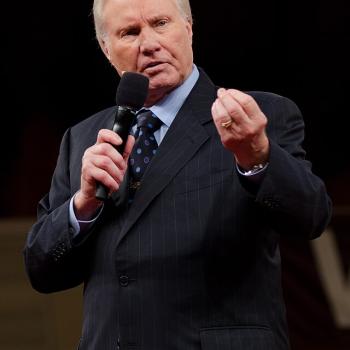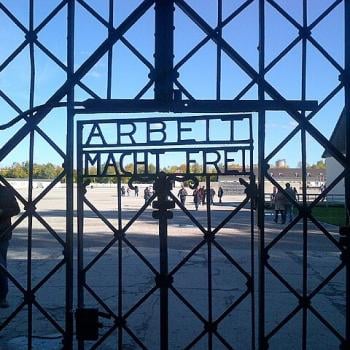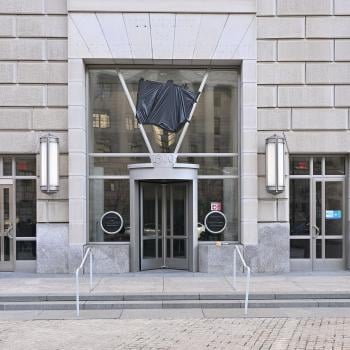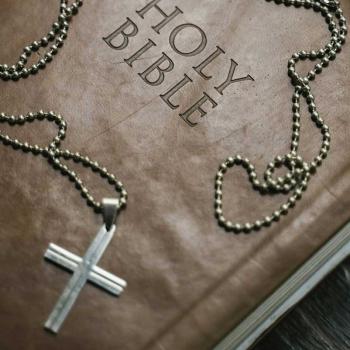Whatever Happened to the “Evangelical Left?
Yesterday I had lunch with a friend who showed me a recently published book I need to read. Rarely do I mention a book here that I have not yet read and this is no review of the book. According to Amazon.com the book’s official release date is tomorrow (October 1, 2012). I’m not sure how my friend got his copy, but sometimes books do appear before their official release date and sometimes publishers will provide advance copies for review.
The book is Moral Minority: The Evangelical Left in an Age of Conservatism by Asbury University professor David R. Swartz (University of Pennsylvania Press, 2012).
The book reminded me of my earlier days in evangelicalism. The year was 1973. I was still in college and newly married. I was just beginning to read magazines like Christianity Today and Eternity and dream of an evangelical world larger than my little Pentecostal one. We thought of ourselves as evangelicals, but we tended to think of “those other evangelicals” (non-Pentecostals) as not quite “full gospel.” (We called ourselves “Full Gospel” as well as Pentecostal.) We said they had a form of religion but denied the power thereof. They were God’s “frozen chosen” and would go first in the rapture (because the dead in Christ would rise first!).
I was beginning to wonder about all that. For one thing, my grandparents belonged to an Evangelical Free church and somehow I knew that, for my family, anyway, that denomination was “okay” even if they didn’t speak in tongues or pray for divine healing (the way we did). Also, an aunt and uncle (who had been Pentecostal at one time) attended an Evangelical Covenant church—also okay. But most importantly, my uncle, president of our little Pentecostal denomination, was on the national board of the National Association of Evangelicals (NAE) and through him I was learning a lot about the “good” of the evangelical movement beyond our Pentecostal, “full gospel” movement.
All that is to say that even then, in 1973, I was beginning to pay attention to non-Pentecostal evangelicals and what was going on among them. I was beginning to read Donald Bloesch. Of all the authors I read in Eternity (a now defunct magazine I’ve mentioned here before), I liked him best. Soon after that, as I entered an evangelical seminary, Bloesch would become and remain for many years my main evangelical mentor through his books. His warm hearted Pietism, mixed with a passion for the life of the mind (no anti-intellectualism), appealed to me. I was also then beginning to read Francis Schaeffer. His little book on “super spiritualism” really spoke to me about much of what I was experiencing among the Jesus people.
1973 was the year of the “Chicago Call”—a document that emerged from a meeting of so-called “left wing” evangelicals in Chicago. They were theologically conservative but politically and socially liberal. As I recall, Ron Sider was one of the organizers of the meeting and authors of the “Call.” Around that time I also began to read The Post-American, a magazine of progressive evangelical thought that eventually changed its name to Sojourners. Jim Wallis became its editor and you know the rest of that story.
Through The Post-American I became acquainted with the “evangelical left”—a movement Swartz writes about in Moral Minority—that has pretty much died out or been eclipsed by the so-called “religious right.” I don’t mean there are no politically progressive, liberal, evangelicals. I mean that particular movement about which Swartz writes died out (so far as I can tell). Jim Wallis is alive and well and still writing and publishing Sojourners and Ron Sider and others associated with The Post-American and the Chicago Call are still around, but one hears too little of them anymore.
That was also the general time frame in which Oregon Senator Mark Hatfield and Illinois Congressman John Anderson were active and public evangelical politicians. Anderson ran for president and, as I recall, garnered about seven percent of the popular vote. I voted for him because I didn’t like either of the mainline candidates and I thought my Post-American “friends” (I didn’t know them personally but liked them) would vote for him.
“Those were the days, my friend, we thought they’d never end” (to quote a song from that general time frame).
I’ll never forget the day I was driving to a friend’s wedding in another state and listened to a public radio broadcast of two evangelical political demonstrations in Washington, D.C. I don’t remember exactly what year it was, but it was sometime in the later 1970s. Jerry Falwell was leading one “march” and Jim Wallis was leading the other one. The NPR reporter was playing up the fact that both were “evangelicals.” (I think this was around the time Jimmy Carter was running for president and the press was making much of his “evangelical” identity.) She, the reporter, was highlighting the presence of evangelical diversity on politics and social issues. She interviewed Jerry Falwell, but not Jim Wallis. (At least I didn’t hear an interview with Wallis.) She asked Falwell what he thought of Walls and he said (I quote) “Jim Wallis is to evangelicalism what Hitler was to the Catholic Church.” I remember almost having an accident on the highway I was so shocked. But it was a harbinger of things to come.
You have to understand that, then, Jerry Falwell was widely considered by evangelicals a separatistic fundamentalist of the same stripe as Bob Jones and Carl McIntire. Later he reinvented himself as a “conservative evangelical” and said nice things about Billy Graham, but then, in the mid-1970s, he was still widely perceived by evangelical leaders as a crank. (I know this because my uncle was on the national board of the NAE and we talked about Jerry Falwell. My uncle, a conservative man in most respects, considered us Pentecostals not fundamentalists because “fundamentalism” was Jerry Falwell and his ilk.)
Later I began to read The Other Side, another progressive evangelical publication. I studied liberation theology at The Shalom Center—a Lutheran theological education by extension center at Augustana College. It’s director, and my teacher for that course, was Jerry Folk, a Lutheran liberationist who deeply admired Camillo Torres—the revolutionary priest. I didn’t understand that admiration, but I did understand the concerns of liberation theology. I wrote my first published piece about liberation theology (a book review of an evangelical study of liberation theology). It was published in Eternity.
You might wonder if I had any exposure to conservative politics and social views. I did. Throughout high school I worked for a man who was the state leader of the John Birch society and had to listen to his long lectures about the evils of communism and American leaders who were “dupes” of the communists (including, he said, President Eisenhower!). But my family were almost all conservative Republicans. I was raised in an environment that was almost monolithically politically and socially conservative. My parents did not grieve when John Kennedy was assassinated (although they were too decent to celebrate, either). So, yes, I knew a lot about conservative political views.
I haven’t read the book yet, but I plan to. I have often wondered what became of the “evangelical left” of those heady days of the early to mid-1970s when students in evangelical seminaries all over North America were speaking out against the Vietnam War and for civil rights and equality for women and redistribution of wealth and the eradication of poverty—in the name of Jesus! I’m not saying they were right about everything. But their alternative voice among evangelicals was to me refreshing, invigorating and bracing.
I am willing to bet that most American evangelicals (who know who he is) do not consider Jim Wallis one of us, an authentic evangelical, just because he’s politically and socially progressive. So far as I know, Wallis has never questioned evangelical orthodoxy. And, so far as I know, he believes in the hallmarks of evangelical Christianity: biblicism, conversionism, crucicentrism and activism. And yet, just because “evangelical” has come to be so identified with the religious right in the public mind he would probably be dismissed by both evangelicals and non-evangelicals as not one. To me, that’s tragic.
But there are still signs of hope. The other day I met a former student who, when he was my student, was a kind of late hippie and a progressive activist. I remember seeing him demonstrate (peacefully with a sign) at the dedication of a multi-million dollar religious building. Now he wears a suit and tie and his hair is neatly trimmed. He heads up a state non-profit organization to fight hunger. According to him, relying on government statistics, there are millions of children at risk for hunger in America. His organization is bringing religious groups and government agencies together to find constructive ways to use government and private funds to eradicate hunger. It’s a lofty goal, but just the kind of goal the evangelical left talked about in the heady days of the 1970s. I don’t hear that goal talked about among the religious right. So far as I can tell, they have no plan to eradicate hunger among America’s children. So far as I can tell, they are only interested in fighting “gay rights” and abortion and redistribution of wealth. (I have listened to their radio programs and read their books.) May my former student’s tribe increase.












